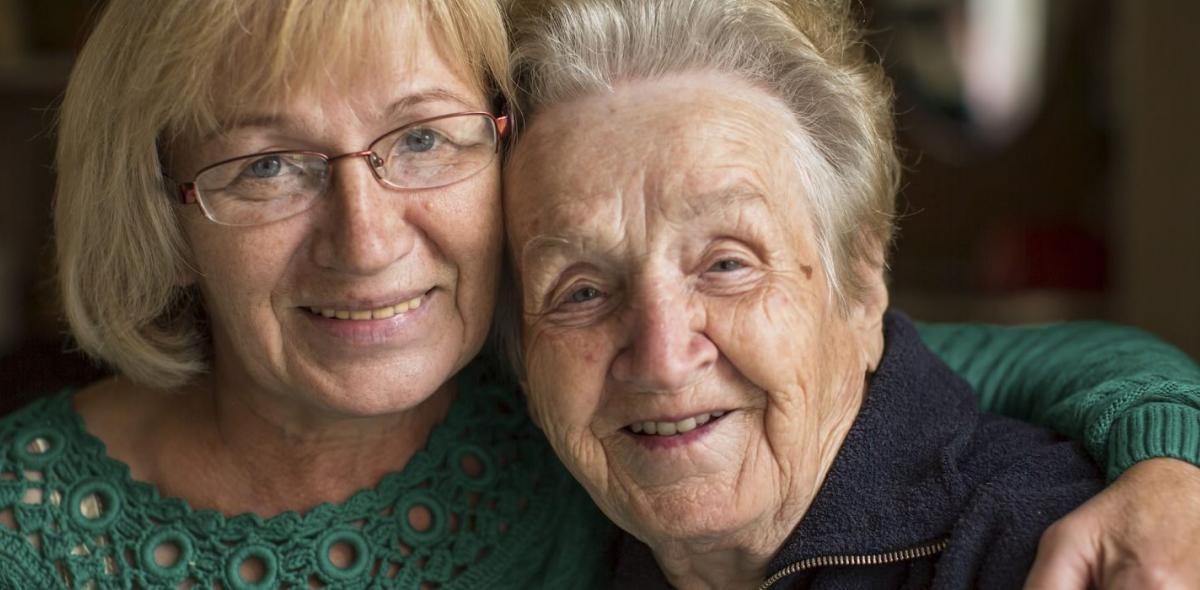Balance for informal caregivers
Since the decentralizations, supporting informal care givers has become increasingly important. However, efforts of local governments and care- or welfare organizations will often remain fragmented if they do not start by asking: what do informal care workers need to keep a healthy balance in their lives? In this article, we reflect upon what you as a policy advisor or (care) professional can do to help informal caregivers maintain their balance.
Providing care for a loved one should be a relay race: others take over (in due time). In this way, informal caregivers are able to maintain acceptable energy levels, also to fulfil other responsibilities. For some people, informal care is a part of their lives. Besides caring for a loved one, informal caregivers have other responsibilities like work and family. Each and every one of us could end up in an (informal) care situation at some point in life.
Informal care situations entail a multitude of relationships and connections. Informal caregivers have relationships with the persons they are caring for. Family, friends and other social relations may also be affected by the care situation: either directly if they provide care themselves, or indirectly, if they experience that the informal caregiver has less time for them due to their caring obligations. Another group that is possibly involved in the care situation are professional caregivers. Also, the care situation may influence other relationships of the informal care giver: an employer, a teacher, players of the soccer team or members of the church he or she belongs to. Together, they make up the informal caregiver’s ‘system’: his or her unshared daily life situation. At the same time, the caregiver is often not the only party providing informal care, other caregivers are involved as well.
In short, it is great to learn that most informal caregivers do not stand alone. But how does informal care relate to other forms of care and support? What about the balance between care and other responsibilities? Effective informal care policy starts by asking ourselves: what do we need to restore or maintain balance in the situation we are in now? In this article, we use a new model to answer these questions and provide useful tips for policymakers and professionals on how to support informal caregivers.
Finding balance
Together with the Faculty of Social Work of the Swiss Fachhochschule Sankt Gallen, Movisie developed a model based on international literature and practical research and focused on that particular question of balance. The model ‘Balance for Informal Caregivers’ shows which reasons in which processes affect that balance. Next to this, it identifies the factors that can be influenced by informal care policy. In all this, it is crucial to never lose sight of the person, the informal caregiver. The Balance model relates to these issues. Research shows that there are four factors affecting the balance or unbalance of informal carers:
- The extent to which the role of informal caregiver is adopted.
- The extent to which the caregiver continues with or discards other responsibilities.
- Increasing or decreasing the role of the (in)formal care network.
- The outcome of the resilience-burden ratio: the energy balance.
1. Adopting the informal care role
The (in)formal care role refers to the extent to which informal caregivers identify with providing care. Are they adopting this role? Or do they only assume it partly? People who truly adopt their role will provide more hours of care. This may have a certain ‘draw effect’: once you start, it will increase and not (just) because the recipient is deteriorating.
‘An informal caregiver is caring for her roommate with dementia. She is a highly educated, sophisticated woman who has deliberately chosen to live together with likeminded people in a former rectory in a rural area. As it is, she and her elderly roommate who requires care are now the only ones left in a senior citizen’s flat in the village. It frustrates her that she can hardly open a book or newspaper as her roommate requires a lot of (also negative) attention. The informal caregiver does not literally express her difficulties with the ‘misfit’ between her expectations and reality, but she does admit to having mixed feelings. To be honest, she sometimes thinks things like: ‘I wished you would just leave’. Eventually, the care indication process for admittance into residential care has been initiated.’
2. Other responsibilities
Here we refer to various other responsibilities like (volunteer) work, housekeeping, family. Studies by the Netherlands Social Research institute on time-budget have introduced the notion of ‘mandatory time’. This is the amount of time spent on things that also have to be done, in addition to care and support.
‘Informal care can also interfere with work, for example because things have to be arranged during work hours. It is possible that people worry a lot while at work. One informal caregiver who takes care of her adult son with autism shares: ‘I couldn’t let go, even when I was at work. When he was home alone I would think: ‘something will go wrong at home.’ She has found support helping her to worry less when she is at work. Her employer allows her to take care of urgent matters or call home during the day to check on him. This offers her more flexibility, in work and care.’’
3. (In)formal care network
The moment that others (professionals, volunteers, other informal caregivers) start to take up their care role more, their share in the total care will increase.
4. The energy balance
The energy balance is essential for informal caregivers and represents the central starting point of the model. In practical terms, the ‘mandatory time’ is the sum of all activities of the informal caregiver, both in light of informal care and other responsibilities such as work. On the other hand, however, mandatory time is a self-reinforcing process. As the mandatory time increases, the subjectively experienced load increases, too. The ability to keep all balls in the air, decreases. Subsequently, the mandatory time increases, as it is costing the informal caregiver more time and effort to accomplish the same tasks as before. This downward spiral will eventually lead to total exhaustion.

Effective informal care policy, 4 points of action to get started.
What policy and which interventions are aimed at a balance for informal caregivers? Starting from the Balance model, we have formulated four recommendations for policy makers and professionals to consider in their informal care policies.
A) Early and ongoing education
First of all, it is important to prepare informal caregivers for their (possible) care duties. This means informing, creating awareness, training and promoting preventive measures. Being prepared for what might happen, influences the extent to which people assume their informal care role. Also, it may instigate people to arrange respite care earlier and more effectively, as well as discuss the imminent care situation in the family and consider personal views and dilemmas with regard to informal care. People can get information about the condition, or seek training in various forms. Experience shows that when people (or their loved ones) are diagnosed they want to educate themselves on the condition. Patient websites provide an important source for informal caregivers. Municipalities can stimulate prevention and early measures by thoroughly educating home care partners like nurses and medical assistants on how to effectively refer and support informal caregivers. Issuing an attractive newsletter for informal caregivers or regularly publishing articles about the issue in local newspapers can also help.
B) Enhancing network elasticity
Secondly, the elasticity of care networks needs to be enhanced, meaning the support by others, formally and informally, such as, use of social networks, organizing respite care and stimulating effective collaborations between formal caregivers and (care) volunteers. If others (professional or informal) take up more care and support in the care situation, informal caregivers have more room to put their role into perspective as well as to find relief. Together with care insurers, local governments can encourage care organizations to join forces with informal caregivers; and local governments can attract partners to organize a voluntary care network and promote it via home care agencies.
C) Empowering informal caregivers
Empowering informal caregivers, helping them build their resilience, is the third action point. Enhancing resilience can vary from providing healthy meals, sports and exercise, to coaching (e.g. ‘knowing your limits’). It can also be useful to learn skills such as, smart apps, time management and personal effectiveness. Local governments can promote similar issues in newsletters for informal caregivers or work with respite care organizations to offer training and courses.
‘We have a small Russian hamster, a tiny white creature. It is a nocturnal animal, it sleeps during the day, but he doesn’t care. I put the cage in front of him on the table and he will just watch it intently. He loves it. And I’ll put the cat on the chair next to him. Our cat is old, he doesn’t jump from the chair, because he loves it. My husband watches the hamster so that Minoesch, the cat won’t get to him. This way, he actually doesn’t move from his chair. It doesn’t always work, but this little trick has saved me more than once.’
D) Support in making choices
Finally, informal caregivers could benefit from support in making choices. It is important to talk about time efficient solutions and informal care friendly employers as well as moral dilemmas. Local governments can approach schools and colleges about extra study groups for young informal caregivers. Also, they can promote that home care organizations organize family circles to discuss ‘making choices’ as a theme.
Care networks
The large number of very diverse informal caregivers, calls for different types of support. The recommendations for possible action do not apply to all informal caregivers or not in the same way. Care networks are different in character and dynamics. This is relevant for the choice of policy and interventions. The way network members interact with each other, how they react to changes in client’s needs, and the possibility of formal care differs per network. Instead of advocating a target specific policy, we recommend a network sensitive policy. We have identified four types of care networks.
In a self-regulating care network, a number of dedicated family members or friends provide a considerable part of the care needed. They appreciate that appropriate (formal) support is important and use it when they can. As care duties becomes more demanding, formal care is sought and the informal caregivers automatically assume a relatively smaller and more suitable role.
In a critical care situation, one motivated loved one provides all the care, even during highly demanding situations and periods. This type of informal caregivers is only susceptible to support under extreme circumstances. This can be due to different reasons: the informal caregiver is ill-informed about available support, has insufficient financial means to call upon support, has a particular sense of duty or self-image or strives to live up to the role he or she has been given. In a critical care network, the care provided is of a high standard, but sooner or later the informal caregiver will break down. Then, professionals will take over and leave very little to do for the informal caregiver, which may be difficult as he or she has always been the primary caregiver.
In a resilient care network, the care is also provided by a single motivated family member or friend. These informal caregivers have sufficient social and personal support systems and means to handle extremely demanding situations. They will only call upon available formal care as a last resort. This kind of informal caregivers will continue to provide a great deal of care, but they are well-equipped and able to stay on top of things.
In a distant care network, there is a certain distance between family and friends and the care recipient. The designated caregivers are reluctant to provide care. This may be due to various circumstances: the physical distance between the homes of the designated caregivers and the care recipient, urgent responsibilities, such as work, a precarious relationship between parties, or the family members or friends do not feel capable of providing the necessary care or feel forced into a certain role. The role of informal caregiver is insufficiently adopted and the major part of the care is executed by professionals. In distant care networks, there is a risk that the care recipient is not receiving the right care because appropriate care and support are insufficiently available.
Get going
It is crucial that informal caregivers find that particular balance that allows them to continue to care for their loved one as well as pursue other activities such as work and leisure activities. This requires a serious consideration of the type of care network we are dealing with. Based on these observations, policy makers and professionals can work towards more resilience for informal caregivers or more elasticity in the network. Bottom line is that informal caregivers pass the baton in time, like in a relay race. They do not have to win the race, but it is important that they reach the finish line.
The balance model can also be downloaded from also from gemeente.movisie.nl (Dutch).


